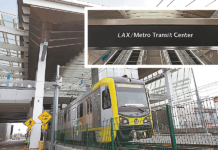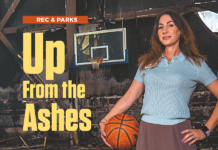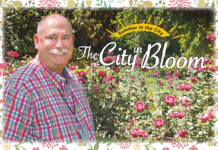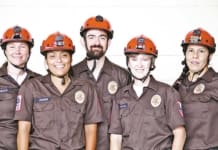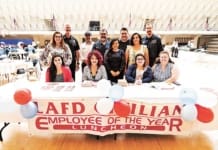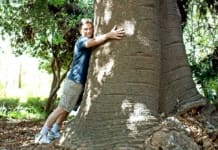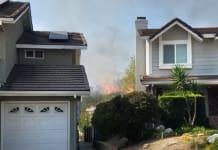Photos by Summy Lam
Come along for the tour!
Since its inception with a half-dozen Airport Guards in 1946, the LA Airport Police has been housed in dozens of buildings, spaces and work areas. It has never been consolidated into one home since expanding to a modern police force of more than 1,100 Officers and civilians in the last few decades.
Until now.
The LA Airport Police took ownership of its impressive new headquarters building in November 2021, consolidating most of its workforce working in eight separate locations into one purpose-built facility befitting the nation’s second busiest and the world’s fourth busiest airport. (Dispatchers remain in a separate building.) The sparkling new headquarters signals a police force that has come of age and grown to fulfill its responsibilities.
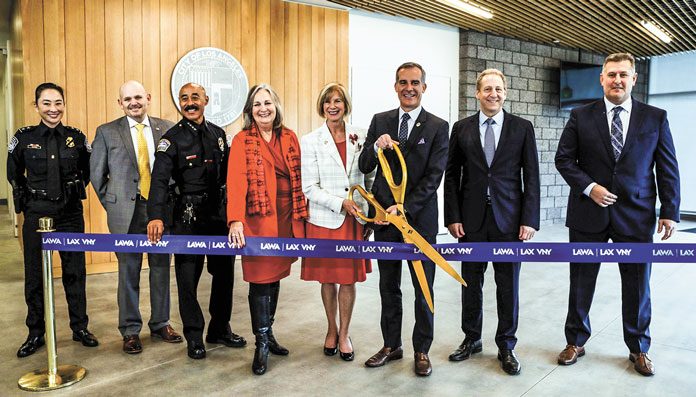
The New Home
The new LAX Airport Police headquarters on Sepulveda Westway at Loyola Boulevard, purpose built for the force, is 160,000 square feet of state-of-the-art facilities with future proofing in mind. Built to LEED Silver certification and Title XXIV energy use requirements, it is designed to accommodate the operations of critical police functions with the infrastructure to support the next generation of law enforcement technologies and best practices.
The campus was designed by Skidmore, Owings and Merrill at a cost of $220 million. It became operational in November, 2021.
In early December, Airport Police gave Alive! an exclusive tour. Come along!
 Tour the new HQ With the Club
Tour the new HQ With the Club
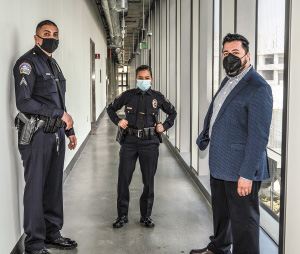
Airport Police led Alive! on a pre-opening tour of the impressive new headquarters. The building, which brings Airport Police personnel together under one roof for the first time in modern Airport Police history, was just starting to be populated by police personnel. Come along!
 Shooting Range
Shooting Range
The new Airport Police headquarters features one of the largest and most state-of-the-art weapons ranges in the United States, and is ten times bigger than the department’s previous facility. Everything the department needs is in one location, which will fully operational in January. Range Master Officer III Robert Stefanovich, 17 years of City service, Club Member, leads the tour of the range. The range facility includes:
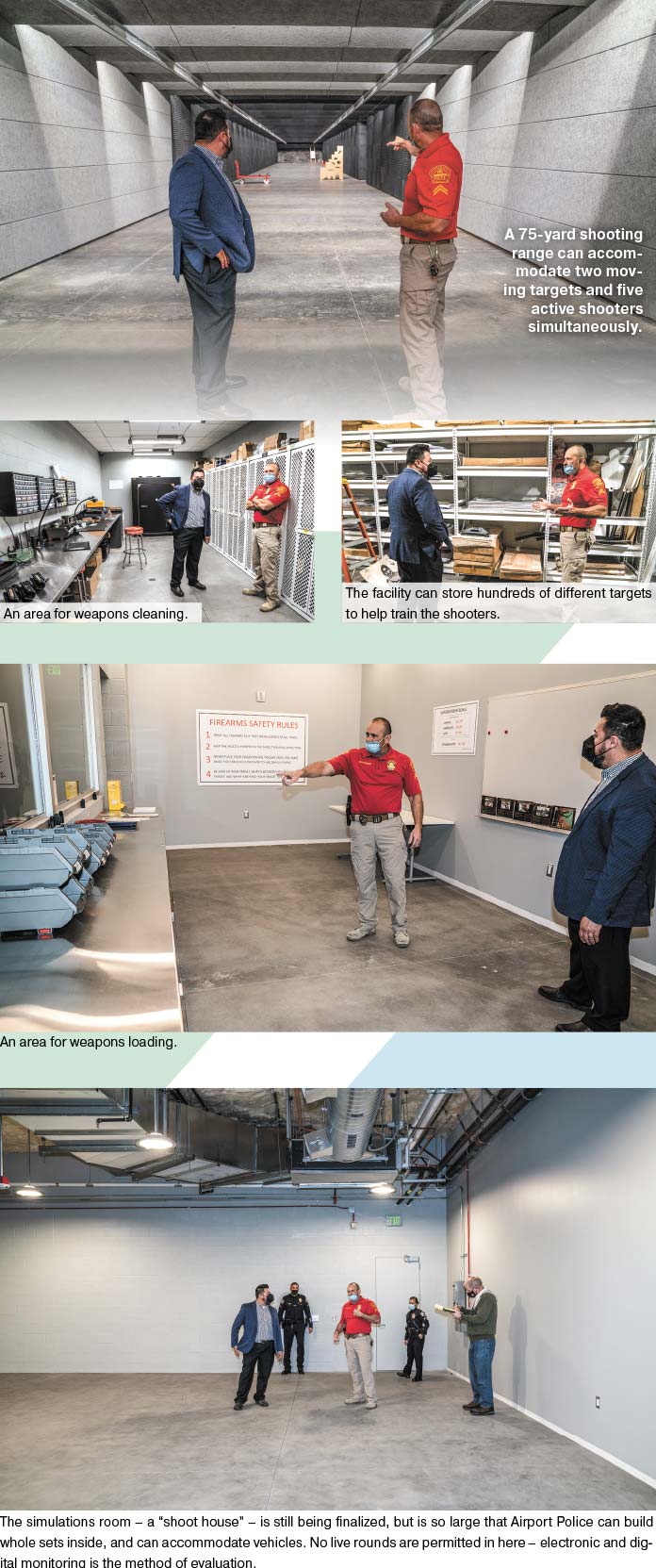
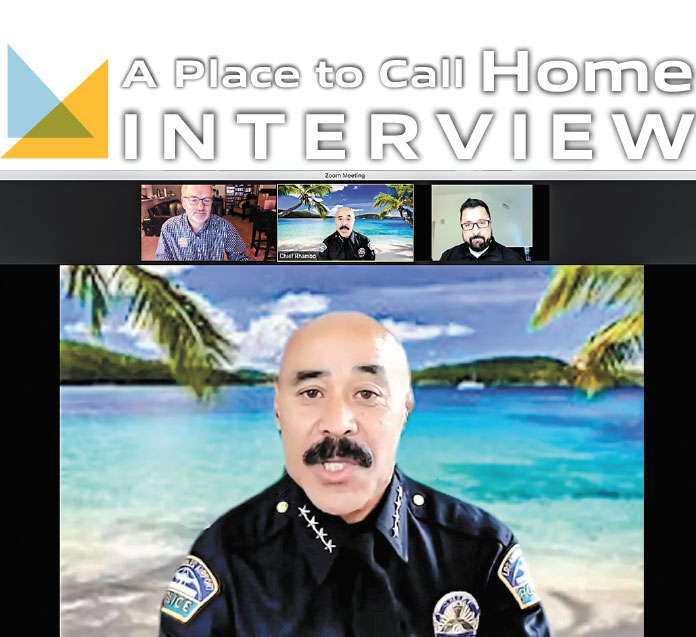
‘A Sense of Pride’
On Nov. 18, Club CEO Robert Larios and Alive! editor John Burnes interviewed Chief Cecil Rhambo Jr., head of the LAX Police Dept. and Deputy Executive Director for Public Safety. The Airport Police is a division of the Airports Dept. of the City of Los Angeles. The interview took place online due to pandemic protocols.
Alive!: Thank you for taking the time out from your busy schedule.
Chief Cecil Rhambo Jr.: Sure.
Briefly give us a career snapshot. How did you get to being in the position where you are now?
I started in government service back in the mid-1970s as a lowly Parks and Rec lifeguard kid. I became a Deputy [LA County] Sheriff in 1981 and spent 33 years in that position. I worked everything from patrol to custody to undercover narcotics to internal affairs a couple times. I retired as Assistant Sheriff in 2014 and got recruited to do city management. I was Assistant City Manager in City of Carson while we were courting the NFL, and then almost three years later I was recruited to be the City Manager in the City of Compton. I did that for close to three years and retired from those jobs. Then I got a call from the then-CEO here at LAX, Deborah Flint in 2019, and she asked me if I were interested in applying for the Chief’s job, and I said, “Sure.” I applied for it, and I got here in late 2019. I’m told I haven’t worked in the airport under normal circumstances ever. I started at LAX literally the next day after I got hired, and my first day here was like 20 hours because the airport opened the LAX-it ride-sharing lot. And then of course coronavirus hit so that’s how it’s been.
Opening LAX-it, that must have been quite a first day!
Right, right. So that’s just a short version of how I ended up here. It’s a very long path.
With all the construction at LAX, you must head out of your office every day, and everything’s changed. What a gigantic transformation of LAX going on right now.
When I got here the APM, or the Automated People Mover, was literally just pillars coming up throughout the two-and-a-half mile run. Now it’s almost completed. A blessing in disguise of the coronavirus is how fast we’re able to do construction without all that traffic. It would have been a real challenge with all that traffic under normal circumstances.
Yes. Streets L.A. says the same thing about a blessing in disguise and moving assertively on projects because of the lack of traffic. Well, at least in the beginning.
Yes.
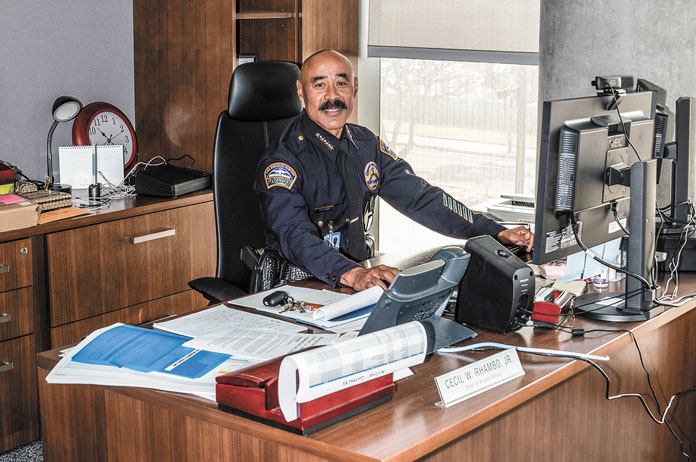
 Status Check
Status Check
Before we get to the story of your new headquarters, with everything that’s going on, can you give us a brief status check on the Airport Police? How is the department doing through the coronavirus pandemic and through all the construction?
Surprisingly well. The vast majority of the personnel didn’t get a chance to take advantage of telecommuting. Some did, but the vast majority of us are first line Emergency Service Workers. We were at work every day during the pandemic, and we lost one Security Officer to the pandemic. We lost another Officer – not sure about the pandemic – but we just lost one recently, and then we lost another Officer to an unfortunate off-duty collision. But in terms of overall public safety, we fared pretty well. We were the first to roll out wearing PPE – protective personal equipment like masks; we still wear masks here in the office. Ninety-nine percent of us are either vaccinated or filing for an exemption here, so we’ve had a lot of cooperation in the vaccine mandate issues. I certainly encouraged the vaccine because I lost my biological dad who I met when I was 57. He passed last year from COVID after being sick only eight days. We lost some folks in the Separation Incentive Program (SIP) [early retirement]. I think a total of 58 folks. Just to retirement and attrition we’re down about 22 Officers, but we’ve already started rehiring personnel. We’re down approximately 15 Security Officers in different ranks.
Like the rest of us, working every day and staying strong and doing what the people of the City of L.A. have hired you to do, keeping everything safe and moving forward.
Right.
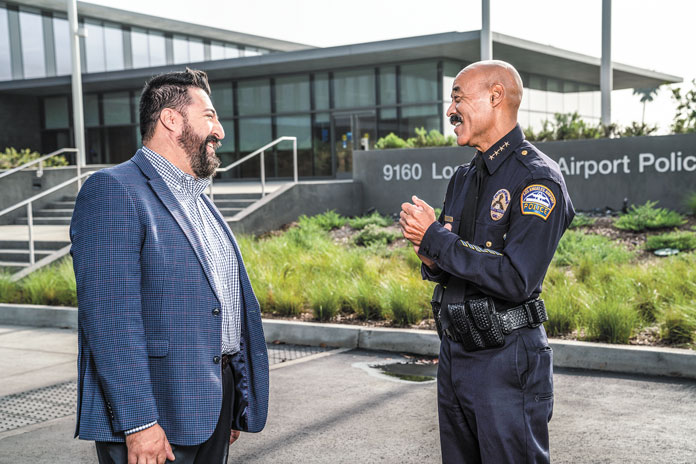
 The New Headquarters
The New Headquarters
We at the Club have watched the development on the corner there of the Westchester Parkway and Loyola Boulevard – your new headquarters. It’s an amazing building. Chief, what are your first impressions?
It’s impressive. I got here for the groundbreaking with the shovel and the dirt. From that to this is pretty gosh darn amazing, particularly in two short years. It’s 160,000 square feet of structure here. We have probably the largest indoor [shooting] range west of the Mississippi at this facility. It’s so large you can actually drive vehicles inside the weapons range, so we can do lots of different types of training scenarios.
The facility itself is a LEED gold standard building. It’s fairly stoic – it reminds me of a Google or Microsoft campus. It’s steel, concrete and glass, so it’s very modern when you go in. It’s almost more than we deserve – we’re used to being in these old buildings. It’s like wow, is this really our place? It’s certainly the envy of office space for other folks at the airport.
Tell us a little bit about the history of the building.
I’ve been here only two years, but it sounds like it’s been on the drawing board for a number of years. Department personnel were spread out amongst eight or nine structures around the airport. My canines were in another building, my training staff was in another, even currently the emergency services or the SWAT guys were in another building, so now we’re all consolidated here in this one building. The only folks who are not housed here in this building are our dispatchers because our communication center is located somewhere else on the airport grounds, and our badging office is a whole standalone service in and of itself – but everybody else is here: emergency services, canines, LAPD bomb detail, Detectives, internal affairs, training. It’s just all security. Our security and access control unit folks as well as our traffic folks deployed and were housed in another building, and so for years these officers never really saw the other Police Officers until they came out into the field. So now everybody’s here in the same sandbox, so I think it’s a positive thing.
Is there an LAPD presence in the building?
The bomb detail is an expertise that we don’t have, so the LAPD explosive detail, the bomb guys are here. Half the canine team is LAPD, and then a few LAPD Officers on the detective team – it’s actually an LAPD task force that we have people attached to, and they’re assigned here too. The regular FSD – the Field Support Division, which is the other uniform portion of LAPD that’s on campus, is still housed in the mobile trailers near Terminal 8 over there on the other side. We plan to try to move them possibly to the old facility.
What does the new building allow the Airport Police to do?
It gives us an easier opportunity to deal with the challenges of coordinating resources. If we have to put together a tactical team in anticipation of demonstrations, we can put our teams all in the same room for briefings and deployment. They’re not going to have to come from other places, they’ll just come from other parts of the building. It also means safer areas to store our vehicles – we have some specialized equipment here certainly. We recently just picked up some drones for our SWAT team guys, and they’re specialized equipment for their whole operation can be housed much more securely here than was before. The new building allows for easier coordination of resources.
Just makes a lot more sense. Is there there any federal presence there? FAA, FBI, Customs and Border Protection, TSA, anything like that?
No they don’t have a presence in the building. They have their own locations. The FBI has certain needs, so there are special rooms in special places for them. Same with TSA – federal air marshals have their own space, but there is office space available here if they need to have a common use area. The foresight in building this place is it was built big enough for growth – as the airport grows in physical structure we’re going to have to add more personnel.
What’s your favorite part of the building so far?
We have a common area, a kind of kitchen area if you will. It looks like a cafeteria or almost like a restaurant or a library or Starbucks. That space is very special. It’s probably about 5,000 or 6,000 square feet, and it opens up to the Community Room. If you know people in the community who want to hold town hall meetings, we have a room for them. That’s something really unique particularly for the airport here. We never really had that kind of community space, at least not with the Police Dept. Our cafeteria area, our lunch break area, is very, very unique.
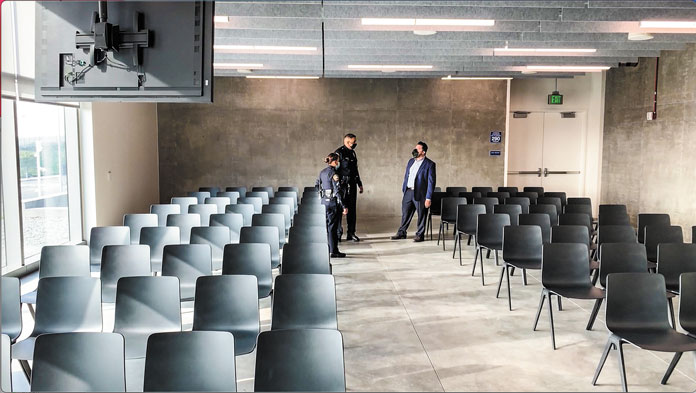
Another thing that I think is really unique is the way we house our specialized units. They’re all down on the first floor. They have giant equipment bay doors that allow them to deploy out. They can seal down very securely.
And then of course the [weapons] range – it’s state of the art. There are going to be people clamoring to use the range. You can actually fire a long rifle in this range and drive vehicles into it. There’s space to do close quarter combat training in the range, so it’s really a state-of-the-art facility.
Another thing – I think the size of the building gives people an idea of the size of the security measures that are put in here at the airport. Prior to this building, people probably had no idea this many people secured the airport. I have the fourth largest police department in L.A. County. A lot of people don’t know that. And the fact that we’re just across the street from the runway hasn’t deterred our deployment times. Those are successes – when you’re building a structure you’re thinking, what did we overlook? Accessibility to the airfield, accessibility to the airport itself and to the parking structures in the surrounding area has proven to be not as problematic as we thought it would be at all. That’s a good success as far as I’m concerned in terms of how quickly can I get teams out there in time of need.
I should also mention for the folks who are very conscious of the environment and sustainability. We have a large number of electric charging stations in the facility, and that we try to stay cutting edge. The LEED-Gold standard for building and efficiency is important. We have an ultraviolet air purification system to help keep our environment healthy.
Looking at it from the outside, it feels open even though it isn’t. It doesn’t turn its back on the outside world even thought it’s secure.
I know exactly where you’re coming from, having spent 30 years in another agency where we actually had to fortify our lobby areas. Our lobby is fortified. Glass windows in most police stations would make Officers feel like they could get fired upon because they can be seen. The reality is it’s very rare that people attack police stations. We have a community room built in to the facility so it’s very much the community’s building as well as ours. It’s very inviting.
 Stepping Up
Stepping Up
Looking at a larger picture here it seems to me that this building really marks an important milestone for Airport Police, a very important moment. Do you feel that way?
Yes. I think that the folks here in our agency feel like they weren’t valued quite as much for far too long, that they were considered necessary but not really valued. This building is a symbol of how much they are valued. It’s the nicest personnel building at all of LAWA as far as I’m concerned. In fact it’s nicer than where the CEO is, and I think it really sends out a sense of pride for our personnel to be part of this building.
What do you wish people knew about what your department does?
I wish they knew how much detail goes into providing overall security for the airport. I don’t think people realize that we are responsible for providing security badges for more than 50,000 employees here on the property, or what’s required to get these badges and the security protocols required. We’re also responsible for training folks and making sure that federal regulations are adhered to. A lot of things go on behind the scenes, and a lot of people have no idea what makes all this work. We’re more than just a visibility and a presence; there’s a whole team and network of auditing and dealing with electronics, looking at cutting-edge technology, working with our federal partners, and so forth.
There are a lot of things going on.
Yeah, there are. As we came into the pandemic we were taking a look at touchless ticketing where you don’t even have touch machines, just facial recognition. That technology has been implemented in the Tom Bradley Terminal. As the scope of these things build out, and as we move forward into the future, our CEO [Justin Erbacci] is very interested in making sure we stay on the cutting edge. With technology, we’re always going to be staying ahead of the curve on that.
 Third Job in Retirement
Third Job in Retirement
What do you love about what you do?
This is my third job in retirement, so I’m going on my 45th year of this profession. I love the camaraderie, the police work, the community engagement. I love public service, and I’ve been doing it my whole adult life. I like being able to talk to the younger folks coming on, because I lived through the Rodney King riots and a lot of other things that happened in law enforcement. I have a little bit of experience in history to pass on, and I like being able to do that. I just enjoy people, and the airport is an exciting place to be. It’s a unique environment, and I really enjoy learning all the new things that I’m learning. I’m grabbing it by the tail and enjoying it all.
Chief, thanks so much for your time.
We appreciate you. We need more good news!
Absolutely.
Bye.
|
BEHIND THE SCENES
|



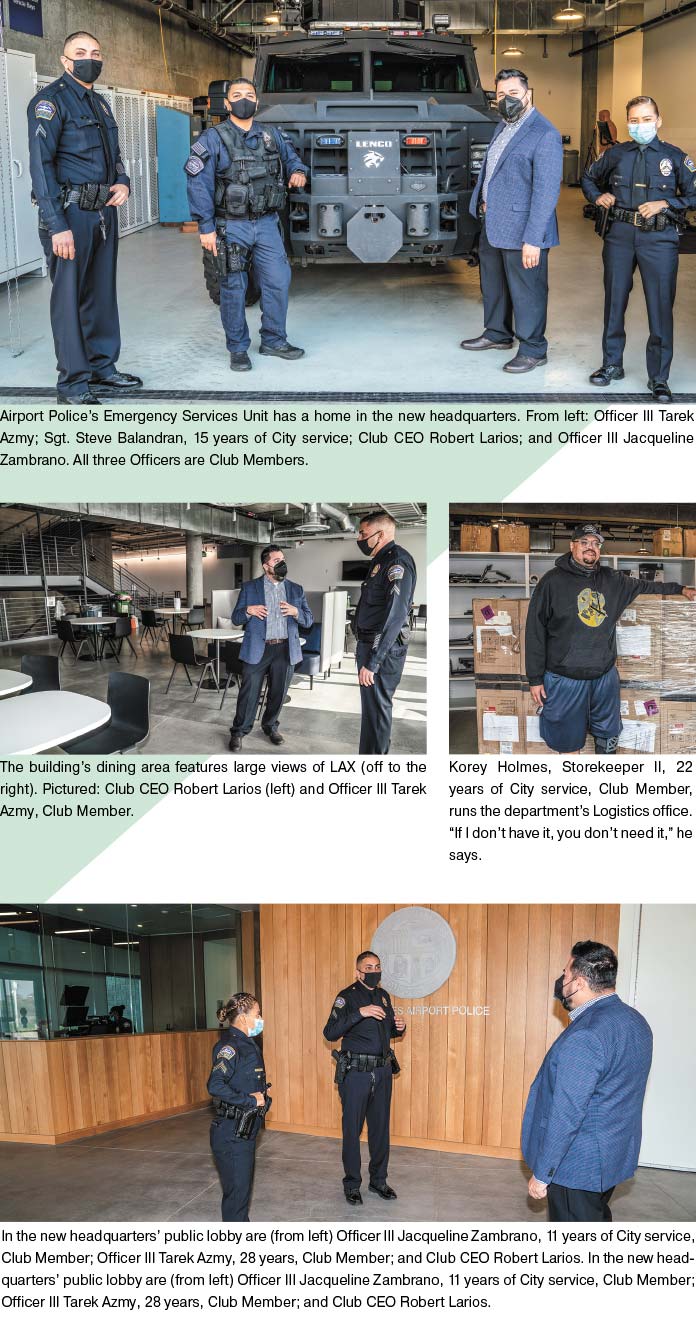
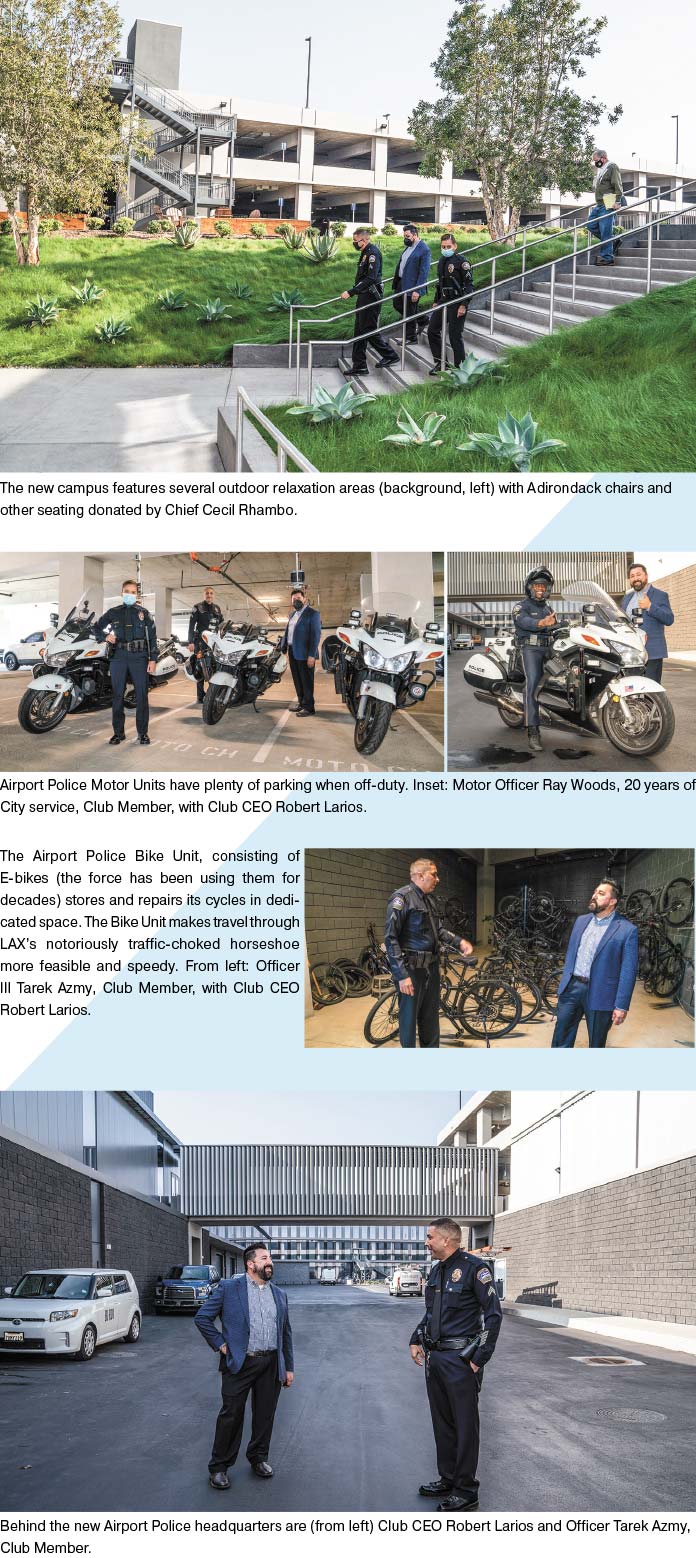
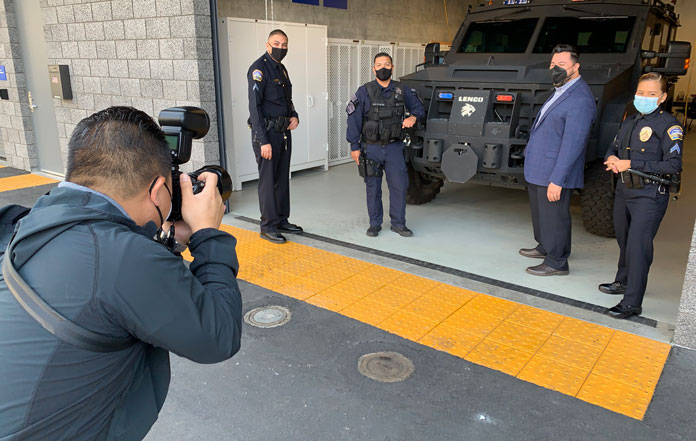 Club Director of Marketing Summy Lam (left) photographs (from left) Officer III Tarek Azmy; Sgt. Steve Balandran; Club CEO Robert Larios; and Officer III Jacqueline Zambrano. All three Officers are Club Members.
Club Director of Marketing Summy Lam (left) photographs (from left) Officer III Tarek Azmy; Sgt. Steve Balandran; Club CEO Robert Larios; and Officer III Jacqueline Zambrano. All three Officers are Club Members.
